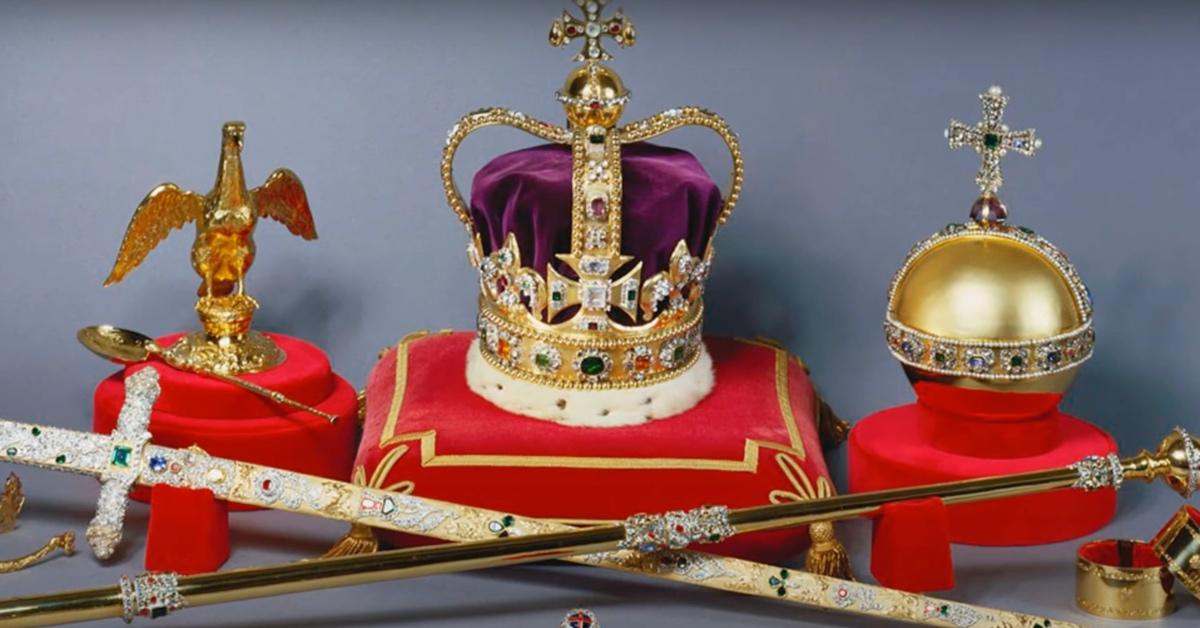Have you ever wondered how many bodies a king actually has? This question has sparked debates and discussions across history, blending mythology, religion, and real-life royalty. Whether you're into historical facts, royal gossip, or just curious about the concept of kings having multiple "bodies," you're in the right place. Let's dive into this intriguing topic and uncover the truth behind the throne.
Let's get real here—when we talk about kings, it's not just about crowns and castles. It's about power, legacy, and the idea of what it means to be a monarch. The phrase "how many bodies does a king have" isn't just a random question; it's rooted in centuries-old traditions and beliefs that shape our understanding of royalty. So, buckle up because this journey is going to be wild.
Before we go further, let's set the stage. Kings aren't just ordinary people with extraordinary titles. They carry the weight of history, culture, and sometimes even supernatural expectations. This article will explore the concept of a king's "bodies," the historical context, and how it all ties into modern times. Ready? Let's get started.
Read also:Matthew Lillard The 90s Icon Who Defined A Generation
Understanding the Concept of "Bodies" in Royalty
When we say "bodies," we're not talking about literal body counts. It's more of a metaphorical concept that separates the personal life of a king from his public duties. This idea dates back to medieval times when kings were seen as both human beings and divine representatives. So, how many "bodies" does a king have? Let's break it down.
What Does "Two Bodies" Mean for Kings?
The "two bodies" theory is a fascinating concept in royal history. It suggests that a king has a "natural body" and a "political body." The natural body is the king as a regular human being, while the political body represents the king's role as the head of state. This division allows kings to maintain their humanity while fulfilling their duties as monarchs.
- Natural Body: The king as a person
- Political Body: The king as a symbol of the state
This theory was first introduced by English jurist Edmund Plowden in the 16th century and has since become a cornerstone of royal studies.
Historical Context of Kings and Their "Bodies"
To truly understand the concept of "how many bodies does a king have," we need to look at history. Kings throughout the ages have been seen as more than just rulers—they've been viewed as divine beings or chosen representatives of the gods. This perception gave rise to the idea of multiple "bodies."
Medieval Europe: The Birthplace of the "Two Bodies" Theory
In medieval Europe, the church played a significant role in shaping the image of kings. The "two bodies" theory was used to justify the divine right of kings, emphasizing their dual role as both human and divine figures. This concept was crucial in maintaining the authority of monarchs during turbulent times.
For example, King Henry VIII of England used this theory to solidify his power, separating his personal life from his duties as a king. It allowed him to make controversial decisions, like breaking away from the Catholic Church, without losing the support of his subjects.
Read also:Kaitlan Collins Husband The Inside Story You Need To Know
The "Three Bodies" Theory: A New Perspective
While the "two bodies" theory is widely accepted, some historians argue that kings actually have three bodies. This third body represents the king's legacy and the impact he leaves on history. It's a fascinating twist that adds depth to our understanding of royal roles.
How the "Three Bodies" Theory Works
The "three bodies" theory suggests that, in addition to the natural and political bodies, kings also have a "historical body." This body encompasses the king's legacy, the stories told about him, and the impact he has on future generations.
- Natural Body: The king as a person
- Political Body: The king as a symbol of the state
- Historical Body: The king's legacy and impact on history
This theory is especially relevant when discussing kings whose actions have shaped the course of history, like Alexander the Great or Napoleon Bonaparte.
Famous Kings and Their "Bodies"
Let's take a look at some famous kings and how the concept of "bodies" applies to them. From the mighty rulers of ancient times to the modern-day monarchs, each king has a unique story to tell.
King Louis XIV: The Sun King with Multiple "Bodies"
King Louis XIV of France, also known as the Sun King, is a perfect example of a monarch with multiple "bodies." His natural body was that of a man who loved art, music, and luxury. His political body was the king who centralized power and transformed France into a dominant European nation. And his historical body? Well, he's remembered as one of the greatest monarchs in history.
Fun fact: Louis XIV reigned for 72 years, making him the longest-serving monarch in European history!
Modern-Day Kings and Their "Bodies"
In today's world, the concept of "bodies" still applies to kings, albeit in a different way. Modern monarchs are more focused on their roles as figureheads and cultural symbols rather than absolute rulers. But the idea of separating their personal lives from their public duties remains relevant.
King Charles III: A Modern Monarch with Multiple "Bodies"
King Charles III, the current monarch of the United Kingdom, embodies the modern interpretation of the "two bodies" theory. His natural body is that of a passionate environmentalist and philanthropist. His political body is the king who represents the United Kingdom and its Commonwealth realms. And his historical body? Only time will tell how he will be remembered.
Did you know? King Charles III is the oldest monarch to ascend to the British throne, taking the crown at the age of 73.
Religious and Cultural Implications of Kings' "Bodies"
Religion and culture play a significant role in shaping the perception of kings and their "bodies." In many cultures, kings are seen as divine beings or intermediaries between humans and gods. This belief adds another layer to the concept of multiple "bodies."
Hindu Kings: The Divine Connection
In Hindu culture, kings are often seen as avatars of the gods, giving them a divine "body" in addition to their natural and political bodies. This belief is rooted in ancient scriptures and continues to influence modern-day Hindu monarchies.
For example, the kings of Nepal were considered living gods until the monarchy was abolished in 2008. Their divine status was a crucial part of their identity as rulers.
Psychological Aspects of Kings' "Bodies"
Being a king with multiple "bodies" isn't just about external perceptions—it also affects the king's mental and emotional state. The pressure of maintaining separate identities can take a toll on any ruler, no matter how powerful they may seem.
The Burden of Multiple "Bodies"
Imagine having to constantly switch between your natural self and your public persona. It's a challenging task that requires immense mental strength. Many kings throughout history have struggled with this duality, leading to both triumphs and tragedies.
For instance, King George III of England, whose story inspired the movie "The Madness of King George," is a prime example of how the pressure of multiple "bodies" can affect a monarch's mental health.
How Does This Relate to Modern Leadership?
The concept of "bodies" isn't limited to kings—it applies to leaders in all fields. Whether you're a CEO, a politician, or a celebrity, you often have to navigate between your personal and public identities. Understanding this duality can help leaders maintain a healthy balance and avoid burnout.
Lessons from the Past for Modern Leaders
By studying the "bodies" of kings, modern leaders can learn valuable lessons about identity, responsibility, and legacy. The key is to embrace the duality of your roles while staying true to yourself.
For example, successful CEOs often separate their personal lives from their professional duties, allowing them to focus on their responsibilities without losing sight of who they are as individuals.
Conclusion: The Enduring Mystery of Kings' "Bodies"
So, how many bodies does a king have? The answer depends on how you look at it. Whether it's two, three, or more, the concept of "bodies" is a powerful reminder of the complexities of leadership and the duality of human nature.
In today's fast-paced world, the lessons we can learn from kings and their "bodies" are more relevant than ever. By understanding the challenges faced by monarchs throughout history, we can gain insights into the nature of leadership and the importance of balancing personal and public identities.
Now, it's your turn. What do you think about the concept of kings having multiple "bodies"? Leave a comment below and let's continue the conversation. And don't forget to share this article with your friends who love history and royalty as much as you do!
Table of Contents
- Understanding the Concept of "Bodies" in Royalty
- Historical Context of Kings and Their "Bodies"
- The "Three Bodies" Theory: A New Perspective
- Famous Kings and Their "Bodies"
- Modern-Day Kings and Their "Bodies"
- Religious and Cultural Implications of Kings' "Bodies"
- Psychological Aspects of Kings' "Bodies"
- How Does This Relate to Modern Leadership?
- Conclusion: The Enduring Mystery of Kings' "Bodies"
References: - Plowden, E. (1571). "The Two Bodies of the King." - Starkey, D. (2006). "Crown and Country: The Kings and Queens of England." - Tillyard, E. M. W. (1942). "The Elizabethan World Picture."



